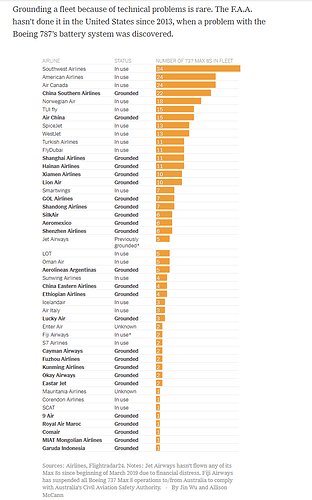I was trying to find a place for this, but figured we could use a general aviation thread.
The big news over the weekend was the fatal crash of Ethiopian Air 302. All aboard were killed. This was a 4-month old 737 Max 8, and Ethiopian has a very good reputation for safety.
This is the second crash of a brand-new 737 Max 8 in six months. The first, Lion Air 610, was in October. All aboard were killed, and while the reports are still pending, all indications point to an issue with changes that Boeing made to the flight control system due to the heavier weight/size of the 737 Max’s engines. What’s more, many pilots claim the changes were undocumented, because in its zeal to sell the plane, Boeing explained that it’s virtually the same as flying the earlier generation of the aircraft.
As a result, passengers are now terrified of flying on the 737 Max, which is a problem, because it’s one of Boeing’s cash cows. The company’s stock nose-dived this morning. And several countries, including China, are grounding their fleets immediately.
